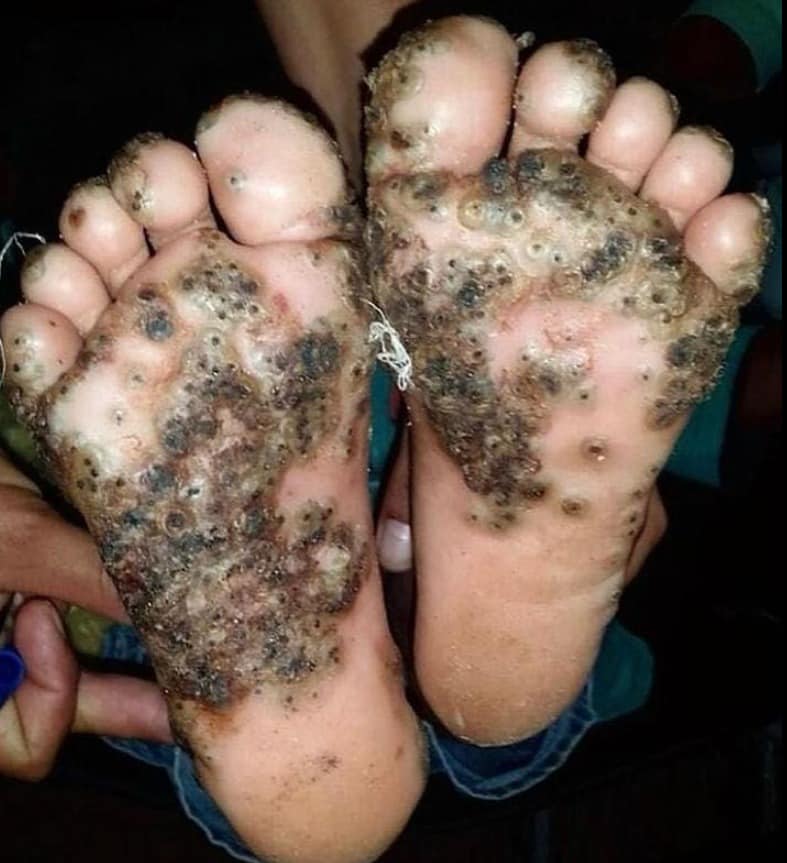Horrific Image Shows Girl’s Feet Infested With Sand Fleas After She Played in a Pigpen Barefoot
A10-year-old girl was left with feet infested with sand fleas after playing in a pigsty barefoot during a trip to a rural part of Brazil.
An image showing the extent of the infestation has now been released by NEJM, with a case report highlighting how she ended up with tungiasis, an inflammatory skin disease caused by the female sand flea Tunga penetrans.
The girl, who was described as otherwise healthy, was brought to a primary care clinic after complaining of itchy skin lesions on the bottom of her feet. She had been suffering symptoms for 10 days. “The lesions had black dots in the center and were painful,” the case report said.
A family history revealed she and her family had traveled to rural Brazil and during the trip, the girl had played in a pigsty without wearing any shoes.
“Sand fleas were removed from multiple lesions, and tungiasis was diagnosed,” the report said. “The patient had previously received all the recommended tetanus vaccinations. Treatment included flea removal and local wound care. After treatment, there was complete remission of the lesions, with no complications at follow-up.”
T. penetrans is found throughout tropical and subtropical regions of the world. They are normally found in sandy areas, such as beaches, stables and farms. According to the World Health Organization, it is also known as a jigger or chigoe. The female of the species burrows into the skin—especially into the toes, sole, the rim of the foot and the heel. It is estimated 99 percent of lesions are recorded in the feet.
“Itching and local irritation occurs as the female fleas develop fully and increase their body volume by a factor of 2,000 within two weeks,” a WHO fact sheet states. “Due to bacterial superinfection of the lesions, abscesses, suppuration or lymphangitis can develop. Multiple lesions and intense local inflammation restrict mobility.”
WHO estimates that over 20 million people in the Americas are at risk of tungiasis, and repeat infections can eventually lead to disfigurement that results in impared mobility.
A rare case of tungiasis not involving the feet was reported in Nepal in January 2018. A man from Kathmandu, Nepal, was found to have an infestation in his genitals. “A 65 year old native man of Kathmandu, Nepal presented to the surgical OPD with a painful small nodule on the shaft of penis for the past 15 days,” the team wrote.
An examination of the lesion showed grey to black tissue covered with skin. “Along with it, there was a parasite with a thick cuticle, exoskeleton, external orifice of the organism,” they wrote. The sand flea was removed and the patient recovered well.

